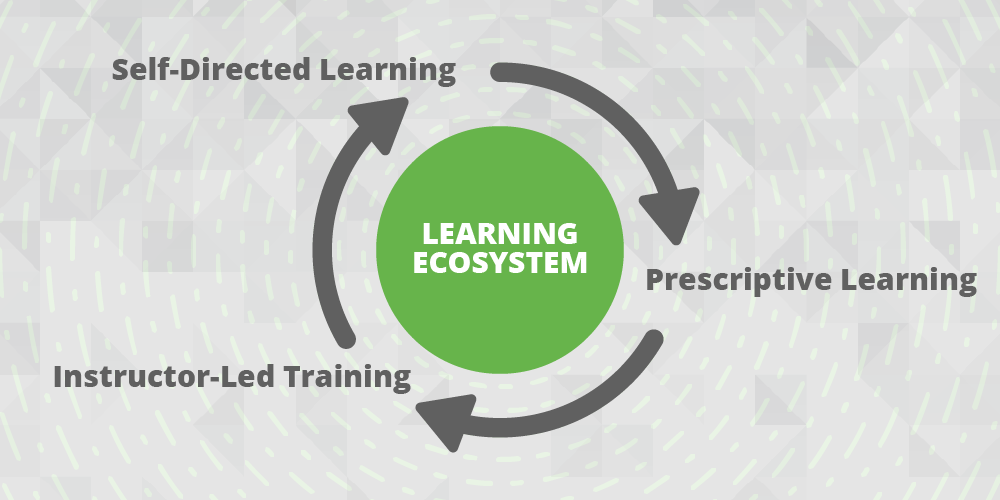
In today’s ever-evolving workplace, the concept of a learning and performance ecosystem has become integral to organizational development. This ecosystem is a dynamic, interconnected system of tools, content, systems, and people that all contribute to learning and subsequent performance improvement in the workplace.
At its core, an ecosystem approach to learning recognizes that people learn in different ways and at different paces. It considers the various interactions employees have with their environment – be it through formal training programs, peer interactions, or real-time access to information – to support ongoing development. The aim is to create a more holistic strategy for growth and performance that adapts to individual needs while aligning with organizational goals.
A well-designed learning and performance ecosystem is built upon several key components:
1. Learning Content: This includes formal instructional materials like e-learning courses, videos, and seminars as well as informal resources such as articles, blogs, and podcasts. Content should be relevant, up-to-date, and easily accessible.
2. Learning Technologies: Technologies like Learning Management Systems (LMS), Learning Experience Platforms (LXP), adaptive learning platforms, and mobile applications support the delivery and tracking of learning experiences.
3. Data Analytics: Gathering data from various sources within the ecosystem allows organizations to track progress, identify trends in learning behaviors, optimize content delivery, personalize learning experiences, and measure the impact on performance.
4. Social Learning: Peer collaboration tools such as forums, instant messaging apps, social media platforms or specialized networking tools facilitate knowledge sharing and community building.
5. Performance Support Tools: These are resources such as job aids, checklists, templates or performance support systems (EPSS) that can be used during actual work tasks to support immediate application of skills.
6. Coaching and Mentorship: Regular feedback mechanisms through coaching sessions or mentorship programs help reinforce learning and facilitate application on the job.
7. Human Resource Strategies: Talent management practices such as succession planning, career pathways development, competency frameworks and appraisal systems need to integrate with the ecosystem for a uniform approach to growth.
Creating an effective learning and performance ecosystem involves integrating these components in a manner that’s seamless for the user but sophisticated in its design. Such ecosystems support not only formal learning but also what is known as ‘the 70-20-10’ model for learning and development: 70% from real-life and on-the-job experiences, 20% from interactions with others, and 10% from formal educational events.
The result of a strong learning and performance ecosystem is an adaptable workforce capable of meeting current demands while preparing for future challenges. Employees feel empowered by having continuous access to knowledge resources at the point of need which leads to improved job satisfaction, competitive advantage for the organization through innovative ideas brought forth by well-informed employees lastly talent retention influenced by evident personal growth opportunities. In conclusion, organizations that invest in robust learning and performance ecosystems are not only upskilling their employees but are also transforming their workplaces into environments where continuous improvement is the norm. By embracing this holistic view of employee development organizations can ensure their workforce remains agile in an ever-changing business landscape.
